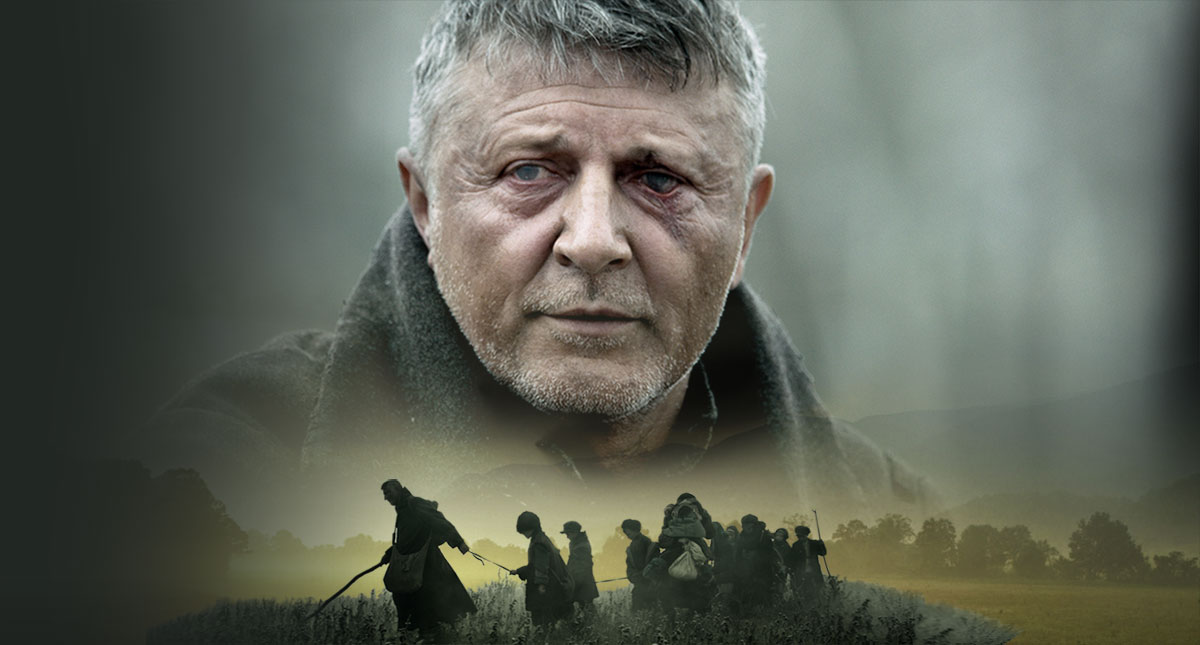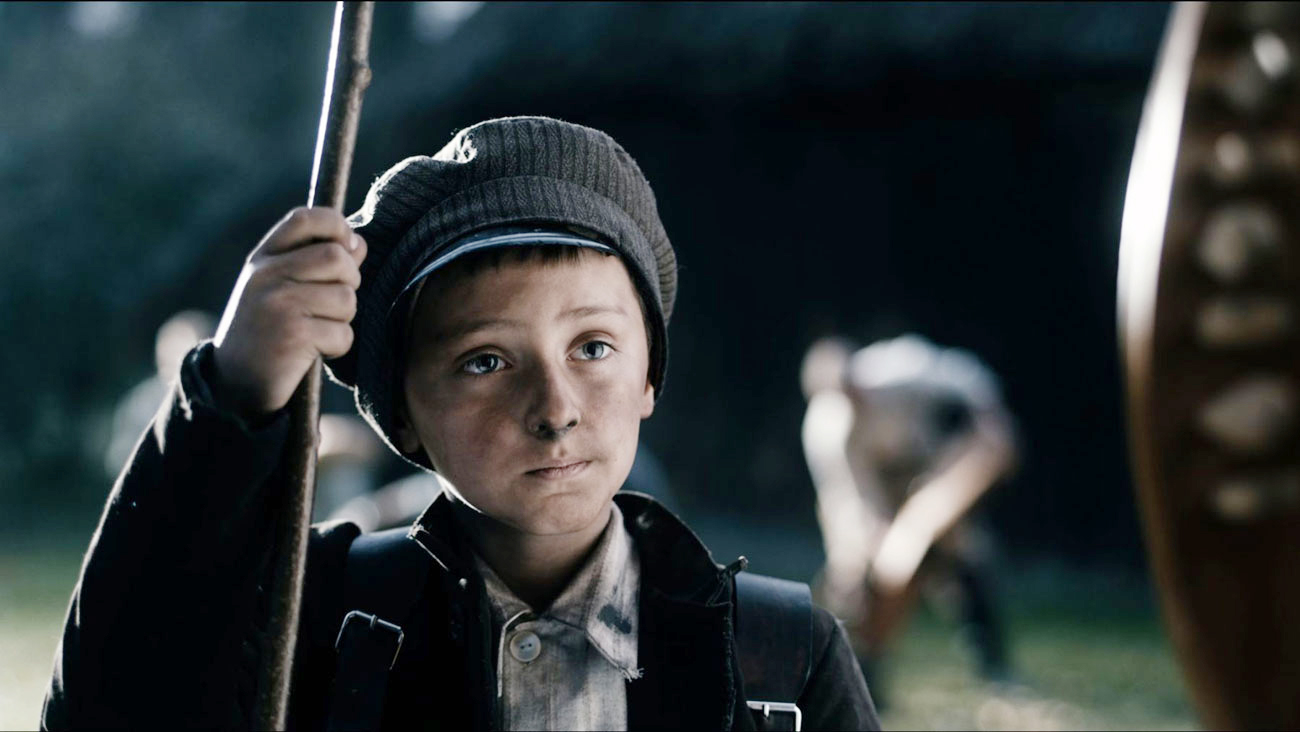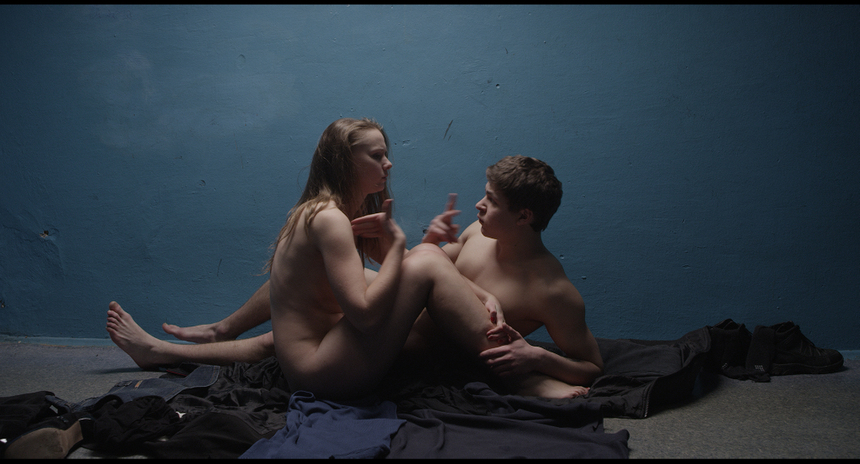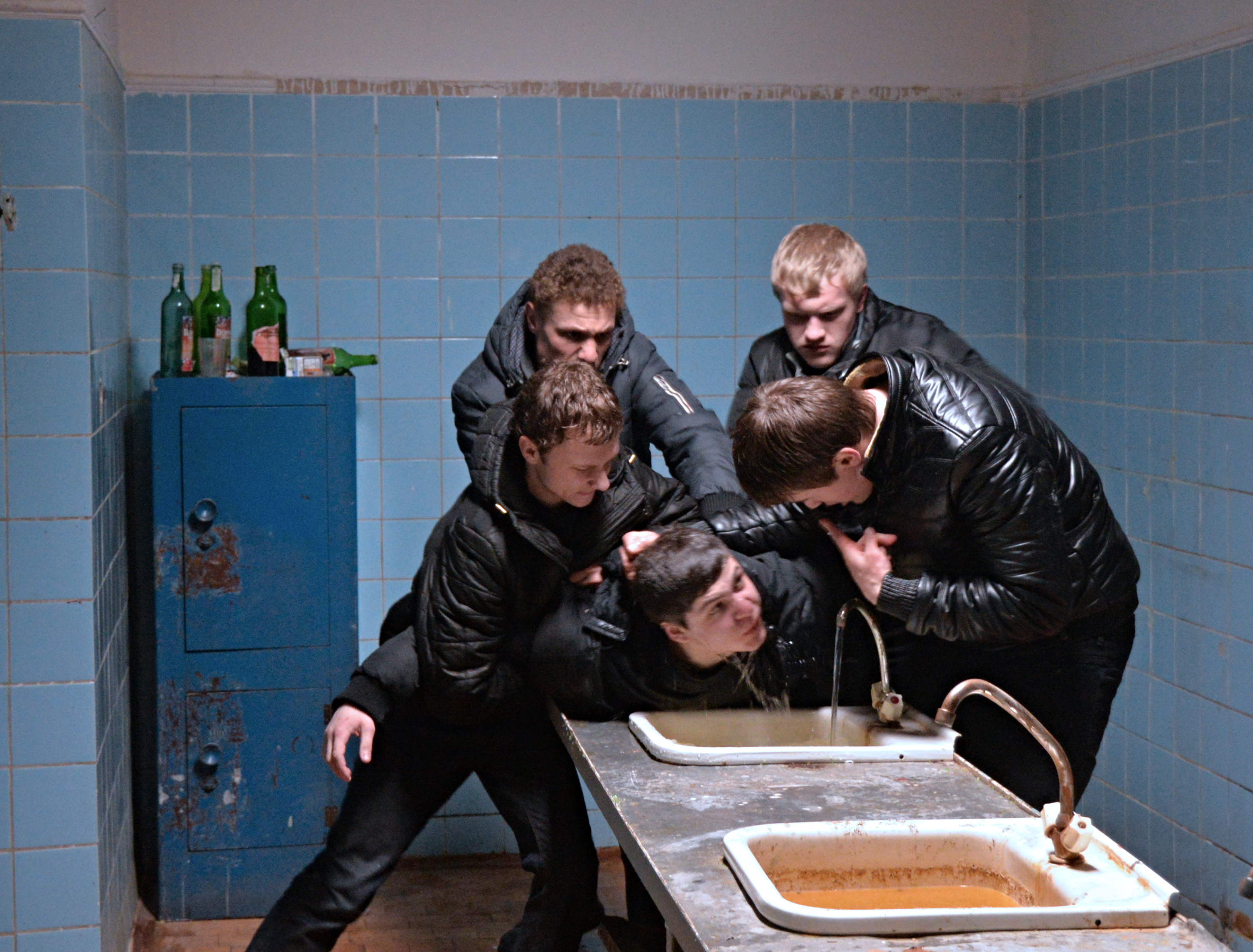May 3, 2017, New York, N.Y. |
Trauma, Resiliency, and Remembrance in Ukrainian Cinema. The Case of The Guide and The Tribe. |
| |
On August 24, 1991, in the wake of a failed coup in Moscow, the Ukrainian parliament declared independence. A few months later, in December of that year, 90% of voters chose to ratify this declaration through a referendum, transitioning Ukraine into a postcolonial, post-Soviet state grappling with questions of national identity. Film became national cinema, aiming to mythologize the legacy of the Ukrainian people through their collective adversity under Soviet rule in the 20th century. The myth building of culture culminates in national experience, which differentiates the nation from other communities through its confrontation with antagonistic forces that seek to destroy it. Andrew Higson notes, “Histories of national cinema can only therefore really be understood as histories of crises and conflict, of resistance and negotiation”. As such, contemporary Ukrainian cinema focuses on the nation’s past maltreatments, “built up on a binary opposition between self and other, where the other [is] the intruder, the colonizer, the enemy” (Pavlyshyn). The two films this review examines, The Guide (2014) and The Tribe (2014), each focus on marginalized communities that persist in opposition to an antagonistic colonizer, whether the Soviet state or, in the case of The Tribe, the apathetic environment leftover from colonization. Viewed together, these films demonstrate the importance of reclaiming past traumas and acts of resistance in post-Soviet Ukraine, crafting a national identity that remains acutely aware of the extreme violence it has been forced to endure through decades of subjugation.
In order to unpack the ways in which Ukrainian identity remains reflective of its colonized past, this review applies post-colonial trauma theory to contemporary Ukrainian cinema. Post-colonial trauma theory redefines how trauma impacts individuals, directing attention to systematic forms of oppression and collective trauma. Rather than PTSD-based models of individualistic experience, post-colonial trauma theory focuses on individuals who are either colonized or descend from the legacy of colonialism, taking into account that trauma can be historically documented and externally caused. Rather than shock or paralysis over the “unspeakable,” postcolonial narratives must be analyzed through lenses of agency, collectivity, and resiliency, recognizing that these are stories created after the end of colonization by populations who have managed to persist. Along this vein, and through analysis of The Guide and The Tribe, it becomes clear how Ukrainian filmmakers employ cinema as a political vehicle through which to recollect and recover Ukraine’s long history of persecution at the hands of the Soviets.

Released in 2014, Oles Sanin’s The Guide follows a young American boy named Peter Shamrock who, after the murder of his father, falls into the care of a blind kobzar named Ivan. Through his narrative, Peter details the 1930s Soviet intimidation and mass execution of kobzars (blind Ukrainian musicians whose practice dates back to the Middle Ages), acting as an outside bystander to the bloodshed and, in turn, forcing the modern day audience to also bear witness. The mass annihilation of the kobzars, who represent the traditional Ukrainian artistic culture, illustrates the way in which Soviets attempted to subjugate Ukrainians via the erasure of their own unique background. The Guide laments the forced disappearance of the kobzars as an example of undermining Ukrainian identity, exemplifying the struggle to rediscover what has been lost after decades under imposed rule. Irene Visser frames the loss of culture as a deep-rooted trauma within colonized and post-colonized populations, since it robs them of their character and leaves them in a state of emptiness: “As processes that dislodge cultural meanings and social patterns, colonialism and decolonization deeply affect a community’s sense of self, and are remembered and re-constructed by communities in narratives of loss and wounding. It is the function of narratives to provide expression to collective responses to the profoundly destructive acts of colonialism, material as well as immaterial, such as the suppression or profanation of sacred indigenous rituals and values”. Examining The Guide as a depiction of cultural trauma, the annihilation of the kobzars represents the loss of the Ukrainian “sense of self.” By focusing the film on kobzars and their tragic conclusion, Sanin both mourns and reconstructs their role in the Ukrainian national identity. Through the inclusion of kobzars’ songs and the chords of the bandura, Sanin pushes back against Soviet attempts to eradicate Ukrainian culture, demonstrating that in the postcolonial period these once-lost icons can now be revived. The film functions as a way to recoup the traumatic cultural losses under the Soviets, thus fashioning a resilient modern Ukrainian identity and proving that Ukrainians “will never become the fertilizer of the future, or anonymous Ivans who do not remember their ancestry” (Taras Kuzio).

Throughout the film the kobzars are depicted as defiant to the Stalinist regime’s attempts to crackdown on their practice, continuing on despite the threats to their lives and thus signifying the construction of a postcolonial identity founded on tenets such as endurance and continued agency. At the film’s beginning, the kobzars already live with painful memories of their capture years earlier, which resulted in many being either killed or forcibly blinded. However, the kobzars do not resort to stasis and melancholia as prescribed by the dominant, PTSD-based notion of trauma. Instead, they overcome their traumatization to continue onward in acts of resistance, their actions thus adopting a larger connotation for the continuance of Ukraine. Visser asserts that postcolonial trauma cannot be diagnosed as PTSD because in the colonial world acts of violence are part of everyday life, subverting the traditional assumptions about traumatization and instead “depicting victims’ resilience, resistance, and eventual triumph over trauma, or a community’s increased cohesion and enhanced sense of identity after a traumatic event”. The film often flashes back in time to the capture of the kobzars after the betrayal by one of their own, depicting the monotone and desolate scene as a source of constant traumatization for Ivan. Rather than allow for this distress to weigh him down, however, Ivan translates the memory into motivation to move forward and protect Peter, who unknowingly carries documents about Stalin’s orders for grain seizures. He refuses to give in, stating, “If we rebel all together, the whole nation, in the entire Ukraine, then no army could stop us.” Through his ability to persist in the face of such horrors, Ivan embodies the postcolonial hero, reminding modern day Ukrainian audiences that they too must remember the traumatic injustices of the past in order to move forward and reclaim their cultural identity following Soviet suppression.
Though specifically detailing the loss of culture from the assassination of the kobzars, The Guide also remains important in its decision to detail Ukrainian suffering through a blind man and an American child, both of whom are in some way impaired. Peter does not fully understand Ukrainian at the movie's onset, leaving him confused and frightened while attempting to keep hidden from the Soviet officials. Ivan and his fellow kobzars, on the other hand, are blind and thus must rely on child guides to travel safely. The employment of disabled bodies as illustrative of the colonialized is a common phenomenon in colonial literature and cinema, as well as in theory by leading colonialist scholars such as Franz Fanon and Edward Said. These depictions translate cultural and social ills into a physical form of abuse, and specifically, in this case, the inability to see. Indeed, the fact that the mass killings of the kobzars occurred but were not addressed in a feature film until 2014 further demonstrates the inability of Ukrainian society to wholly recognize and digest Soviet era atrocities until recently.
The clearest demonstration of cultural destruction and reclamation comes in the film’s climatic ending, after the boy hides on a train and follows the kobzars to their imminent demise. Switching between the kobzars singing and the rattle of the train, as well as the snowy country background, the film presents a final visualization of strength for Ukrainian culture. In an interview, Sanin emphasized the importance of the songs, noting that “you can kill people, but you cannot kill a song about freedom.” That does not, of course, prevent the Soviet soldiers in the film from doing just that, herding the blind old men into a snow-covered field to be killed. Peter runs to Ivan, who has been stabbed and tied to a cross, attempting to save the old man’s bandura before the explosives detonate. That Peter attempts to save the bandura, the last remnant of the kobzars, signifies the importance of preserving local culture to prevent undermining or obliteration by the colonizer. Moreover, as a period accessory and evocation of the kobzars, the bandura adds to the creation of myth in the film, making it into what Anthony Smith would refer to as “ethnic atmosphere” that situates the Ukrainians as the land’s chosen inhabitants. However, the boy is ultimately too late, and the screen goes black before fading in to Peter and Ivan leaning against a building’s ruins, sunshine and blue skies bearing down on them from above. In juxtaposition to this utopian vision, the camera then returns to replay over and over the field’s explosion, grey clouds of dirt and snow pillowing out into the sky. The scene mirrors the flashbacks that Ivan relives earlier, presenting monochrome shots of a desolate and waylaid landscape where only destruction can occur. As such, the scene demonstrates the cultural traumatization of Ukraine, whose identity the Soviets attempted to reduce to nothing more than rubble and bones buried beneath the snow. The explosion scene continually replays for almost a minute, reinforcing the extent to which these sort of atrocities have impacted the Ukrainian psyche and powerfully reiterating that these traumas can no longer go unacknowledged.

Also released in 2014, Myroslav Slaboshpytskiy’s The Tribe won three prizes during Critics’ Week at the 2014 Cannes Film Festival. Because of its accolades, many critics believed that The Tribe should have been the Ukrainian contender for the Academy Award for Best Foreign Language rather than The Guide, sparking controversy over both the art of cinema and the voting process for Oscar nominations in Ukraine (Barraclough). The Tribe details an isolated boarding school for the mute/deaf, in which a young man becomes engulfed within faculty-sponsored crime and prostitution. He falls in love with a fellow student, a prostitute who plans to move to Italy without realizing that her life there would most likely be as a sex slave. The boy tries to save her by destroying her visa, but his actions result in a bloody beating from the other boys, who actively make money through their small prostitution ring. In the end, the protagonist violently bashes in the head of each boy as he sleeps blissfully unaware, forcing the audience to witness the bedside table repeatedly slamming against their skulls. In opposition to The Guide, which employs cinematic features such as music, narrative, and purposely tear-inducing scenes (which led some critics to label the film as two-dimensional), The Tribe does not employ any language, creating a subliminal space that artistically and metaphorically unpacks postcolonial trauma in the Ukrainian consciousness.
While The Guide includes gruesome scenes of carnage and destruction of the human body, The Tribe creates a narrative centered entirely on the corporeality and physical abuse of ostracized individuals. It is through their bodies that the mute/deaf students communicate, enact what agency they can, and commit acts of violence. Erased completely, the absence of spoken language demonstrates the linguistic extinction that colonized populations endure through the imposition of the colonizer’s language and the suppression of indigenous languages. Slaboshpytskiy purposely chose not to include subtitles in the film, forcing the viewer to assume the same position of linguistic confusion and incomprehensibility as the colonized. The technique mirrors mainstream styles of the traumatic aesthetic as fractured and experimental. Though addressing postcolonial trauma and literary modernism, Greg Forter sheds light on the representation that Slaboshpytskiy employs: “Modernist techniques, in other words, are here forms deployed for the purposes both of approximating the disruptions of traumatized consciousness and of retrieving what that consciousness has been forced (through social violence) to forget”. The film’s lack of language and specific location contributes to a break in the audience’s consciousness, creating a world so overwhelmed by trauma that everything, from the characters’ interactions to the surrounding landscape, is apathetic, silent, or barren. Even the male protagonist, arguably the only character who does express empathy and a desire to escape, fails to do so, resorting to physical murder in order to free himself. In a blunt and artistically intricate manner, The Tribe warns that Ukrainians must wake up and recognize the continued effects of Soviet-era trauma within their society and on their identity, characterizing the importance of agency as promulgated by Visser.
Rather than retell one specific set of historical events, like The Guide’s focus on the kobzars’ liquidation and Stalin’s orders for grain confiscation, The Tribe operates as a descendent of the 20th century Ukrainian experience at large, desensitized by ingrained cultural trauma and the acceptance of violence as society’s norm. Though the Soviet Union is not explicitly identified, Slaboshpytskiy establishes the colonizer’s presence by its lasting influence within society, spurring rampant corruption, indifference, and self-centeredness. The main characters are all teenage schoolchildren born in the post-Soviet era, yet they remain tethered to the injustices of the past, illustrating the dynamics of postcolonial trauma as something that “reaches many individuals, who preserve the memory of the event and pass it on to the next generation” (Herrero and Baelo-Allué). Additionally, the film’s cinematography employs long shots throughout, forcing viewers to coldly gaze upon the scenes in question as passive viewers unable to interfere. In this case, not only does the film remind the audience of past sufferings through society’s ingrained corruption, but it also forces them to re-experience traumatization through gory scenes of rape and murder. This reiterates the centrality of trauma within the modern Ukrainian identity, as constant reminders of previous maltreatment are crucial for defining a nation. Moreover, all of the characters in the film are disabled via hearing disabilities, emblematically unable to digest what has occurred within post-Soviet Ukraine.

In the movie’s grizzliest scene, the protagonist’s love interest goes to an apartment for a “coat hanger” abortion, which Slaboshpytskiy presents in graphic detail with little noise other than metal clanging and female whimpering. As the film does not clarify who is the father, the girl may be pregnant from one of the random truckers she had sex with for money, furthering the depiction of her body as a site of degradation. Moreover, the girl’s pregnancy denotes fertility, likening her corporeality to the fertile Ukrainian “motherland,” a gendered term that designates the land as a feminized national space that Ukrainians claim proprietorship of. Central to both postcolonial thought and nation building, physical land allows for nationalism to be constructed in the wake of post-Soviet oppression, as Lowell W. Barrington argues through his assertion that nationalism only requires “the nation and control over territory – specifically, the perceived national ‘homeland.’”. However, as a representation of the Ukrainian motherland, this girl endures almost every form of abuse, including rape and unsterilized abortion, thereby illustrating the vulnerability of Ukrainian territory as a location of previous invasions by the colonizer and as a continued target for annexation. Adding to the complexity of The Tribe, it is the male protagonist who rapes the girl, problematizing the clear distinction in The Guide between good (colonized) and bad (colonizer). In reality, a driving element of colonial oppression is the colonizer’s ability to create disruptions within the colonized community, essentially urging for civil unrest and creating an environment in which members of the population actively oppose one another rather than rising up in unity against the colonizer. Ukrainian history has long included examples of individuals who sided with the Soviet regime rather than Ukrainian nationalism. The Guide does touch on this through Vladimir’s betrayal to save himself and become a Soviet officer. Yet, whereas Ivan remains a hero in The Guide, The Tribe asserts that there cannot be a real hero in post-soviet Ukraine, as individuals remain unable to come to terms with past events and recognize the role that Ukrainians played in their own exploitation, whether actively or just through complicity. That being said, however, the male protagonist does prevent the girl from traveling to Italy in the end, thus to some degree rescuing the motherland from further injustice.
While the male protagonist attempts multiple times to assert his own agency, whether by helping out with the pimping shifts or by stealing money from his teacher in hopes of helping the girl, it is not until the final scene of the film in which he wakes up, so to speak, from the maltreatment that has become normalized within society. His agency comes through the destruction of what remains of the colonized, namely the corrupt and corrosive society that has flourished under the pretext that nothing matters. Following his brutal beating, the boy goes from room to room in the dormitory, picking up bedside tables and violently smashing them against the each boy’s heads, serially murdering one after another. The scenes are steady and slow-paced, forcing the audience to sit through each killing as a chilling yet somewhat fulfilling destruction of the system in place. The boy’s violent actions can be interpreted as the intense wake-up call that Slaboshpytskiy attempts to evoke through his film, establishing agency within the destruction of the colonizer and thereby presenting a new postcolonial understanding of identity that embraces cultural trauma rather than allows for it to continue numbing Ukraine’s psyche.
In the post-Soviet, postcolonial period, contemporary Ukrainian filmmakers such as Oles Sanin and Myroslav Slaboshpytskiy have employed their filmmaking to probe larger questions regarding Ukrainian national identity and the continued legacies of cultural trauma from Soviet rule. When viewed together, The Guide and The Tribe force viewers to recognize the tribulation of the Ukrainian people, foregrounding an independent Ukrainian nation through the active remembrance of historically documented injustices at the hands of the Soviet Union. By directing attention to sources of trauma in the 20th century, namely the mass killings of marginalized populations like the kobzars as well as the general numbing of Ukrainian society overall, Sanin and Slaboshpytskiy retroactively apply agency and resiliency to traumatic events that have defined postcolonial Ukraine. As a result, their films can be interpreted as proclamations of triumph over the multi-faceted forms of violence that Ukraine has encountered over the past century, from cultural and linguistic annihilation to physical bloodshed. Though neither film concludes with a formulaic happy ending, they each feature extreme displays of agency on behalf of the protagonists in their final moments, constructing a Ukrainian sense of self that does not give in even when it has been repeatedly beaten down.
Ruby Rose Lee,
Columbia University
|




